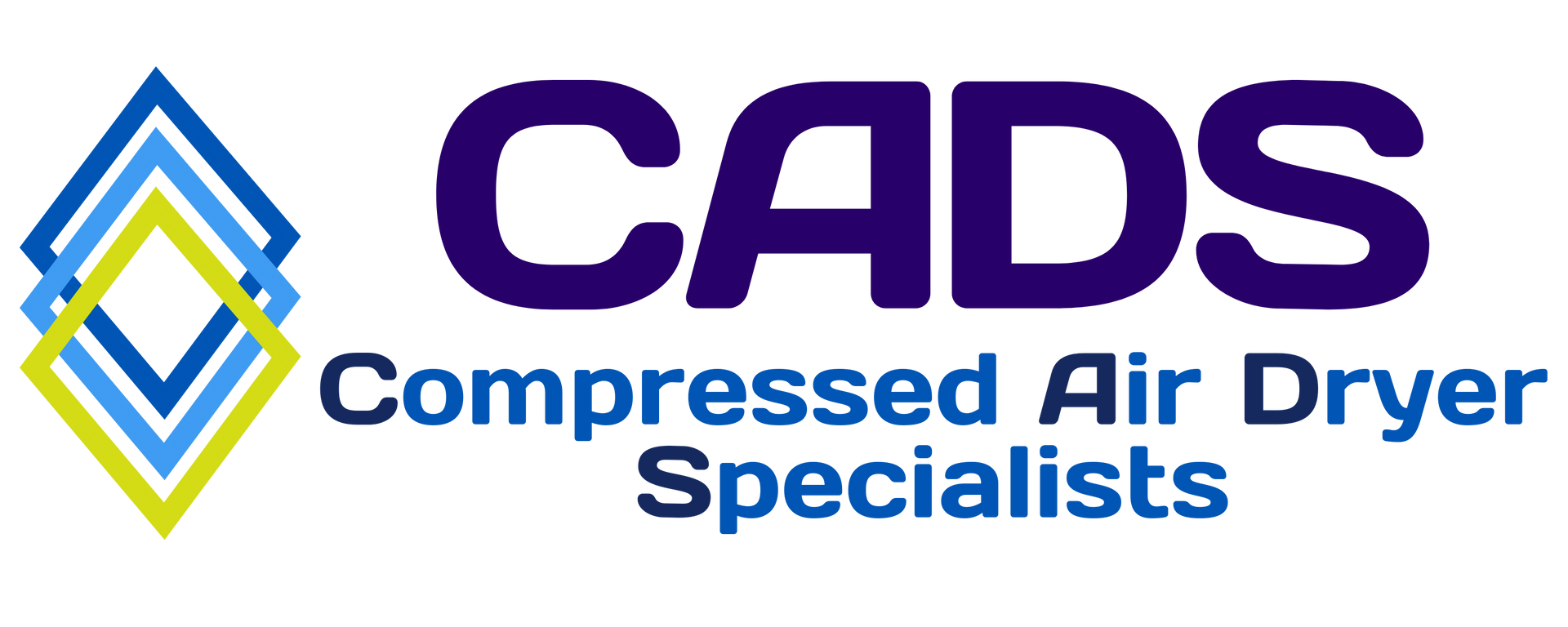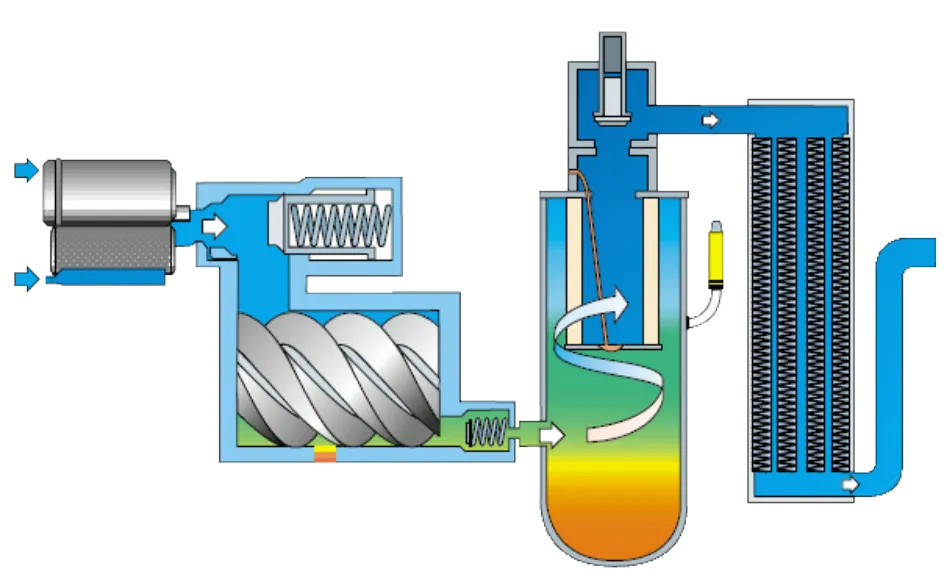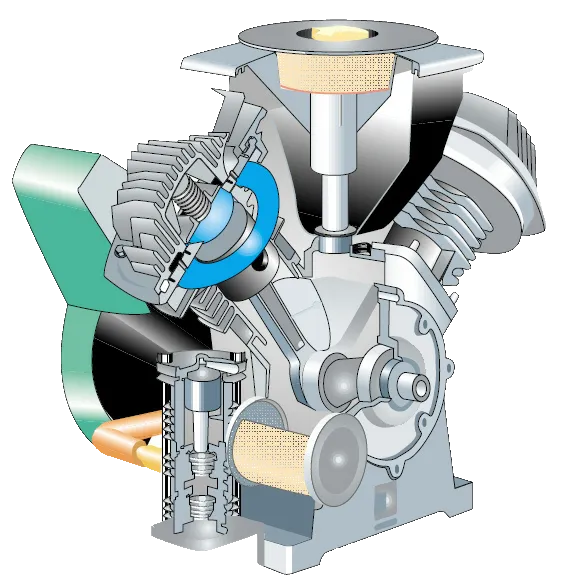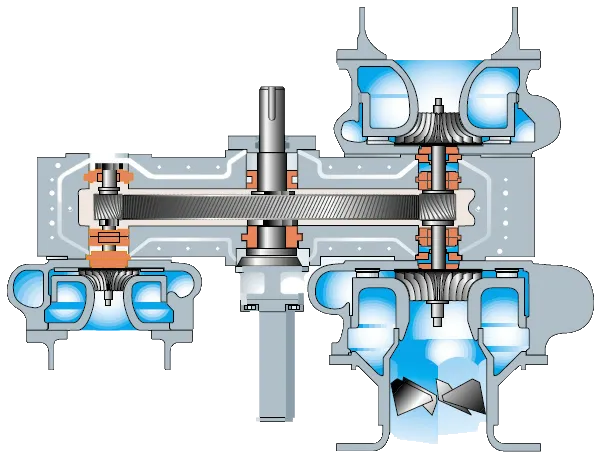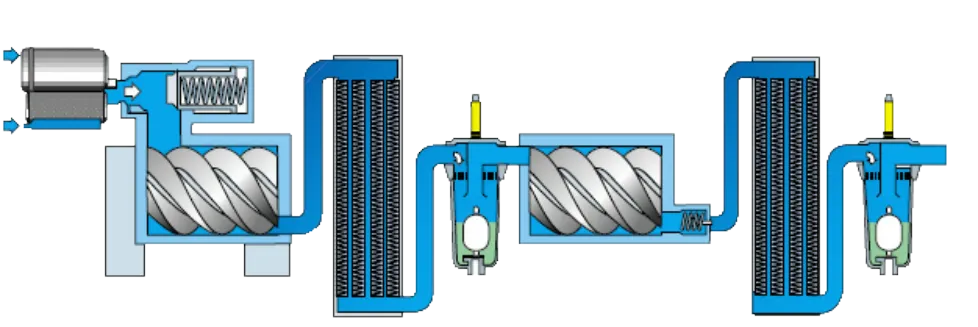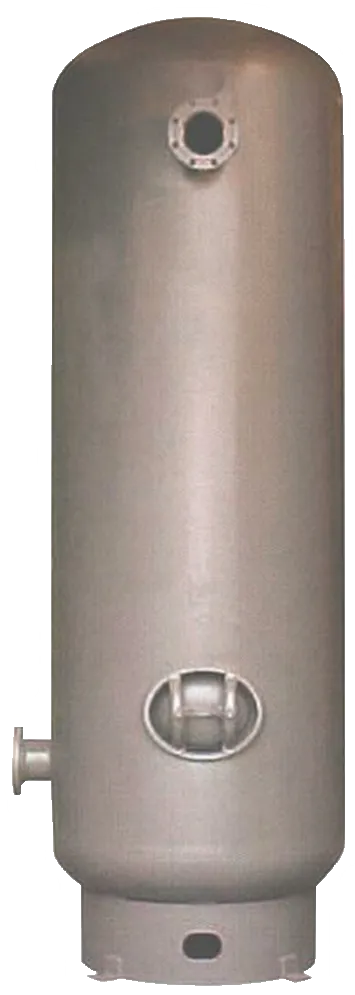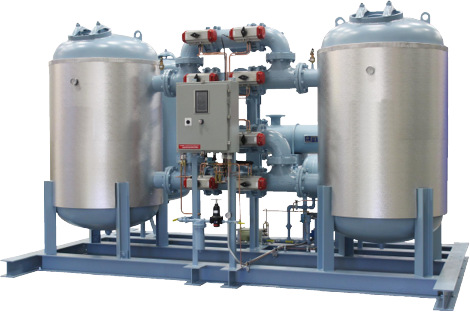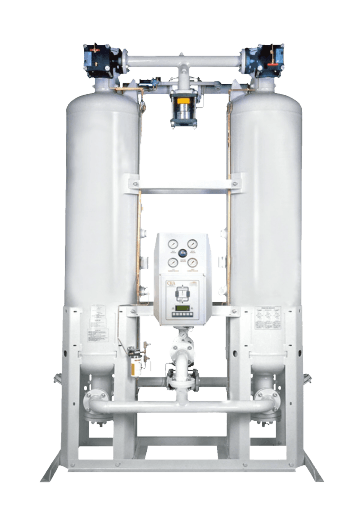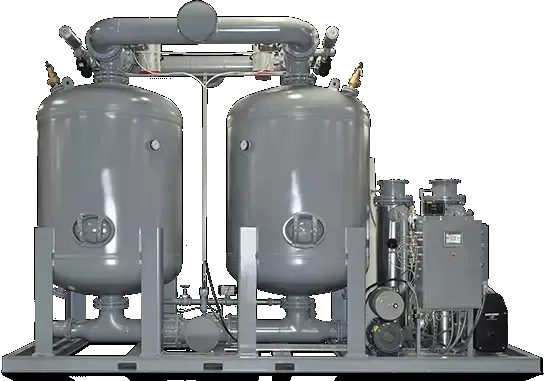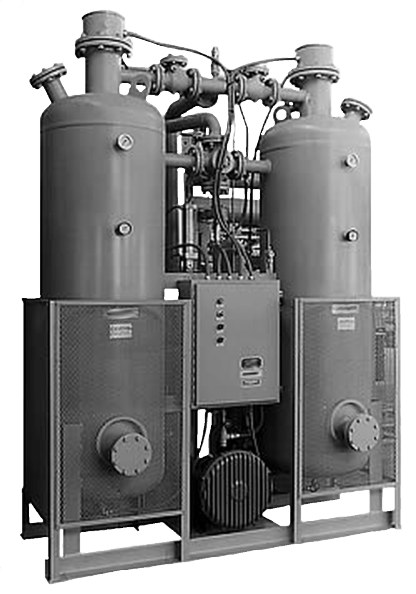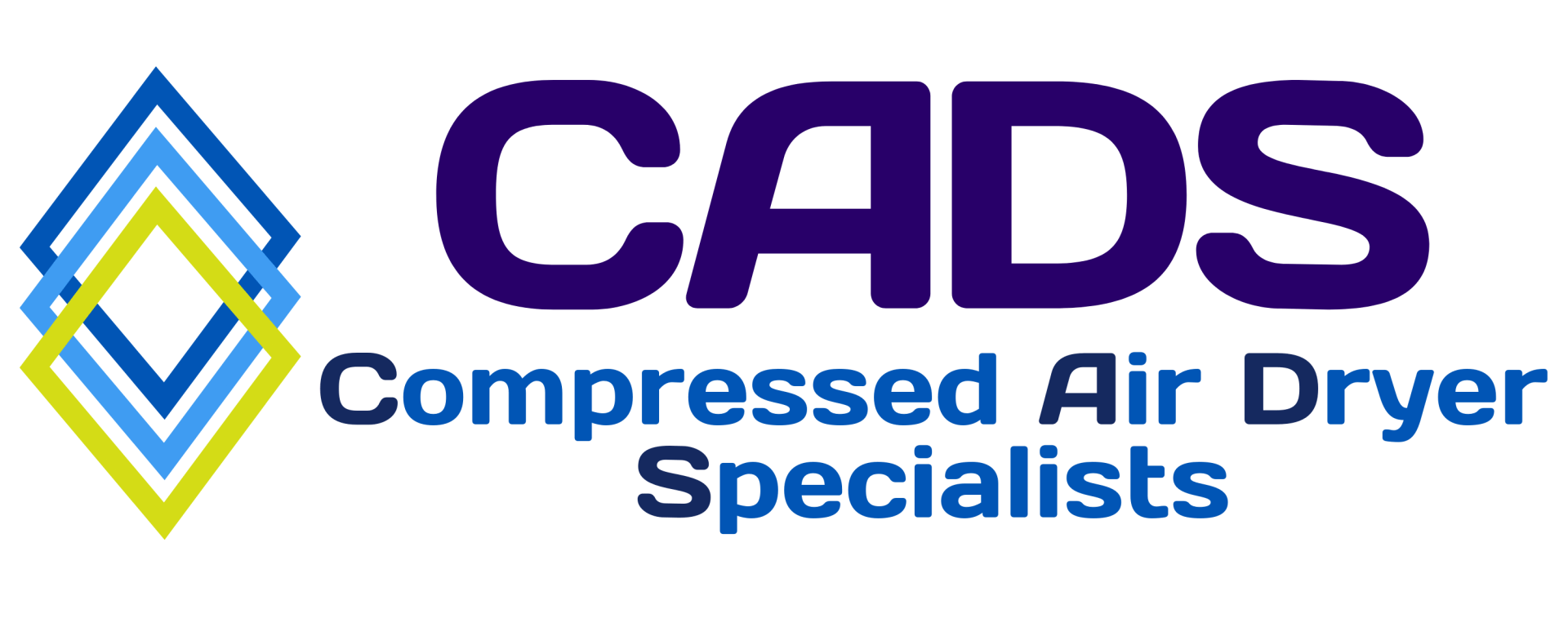COMPRESSED AIR SYSTEMS
Here you will see information relating to compressed air systems, major components and dehydration (drying).
Instrument Air System Main Components
COMPRESSOR
The choice of compressor is generally determined by the amount of compressed air required at a given pressure.
For larger installations, such as petrochemical and chemical plants, there are really only four options capable of providing the volume of air required.
Main functions/benefits
1. Acts as a reservoir for peak downstream demands.
2. Provides a "hold up" capacity, providing time to
shutdown downstream processes safely.
3. Acts as a "chiller", large surface area provides cooling, removing additional liquid water through condensing.
4. As the inlet and outlet are offset, allows for additional
liquid water to be removed, due to directional change,
impaction.
5. Reduces pulsation effects associated with
reciprocating compressors or cyclical downstream
processes/demands.
DESICCANT AIR DRYERS
Desiccant Air Dryers are designed to remove vapour phase moisture.
This is achieved through inlet filtration and beds of desiccants.
Main functions/benefits
1. Acts as a reservoir for peak downstream demands.
2. Provides a "hold up" capacity, providing time to
shutdown downstream processes safely.
3. Reduces pulsation effects associated with
reciprocating compressors and cyclical downstream
processes/demands.
Both "Wet" and "Dry" air receivers provide benefits 1, 2 & 5, but only the "Wet" air receiver provides the additional benefits of 3 & 4.
On balance, accounting for all the benefits, where only one receiver is allowed for within the budget, a "Wet" air receiver would always be preferred. The ideal situation would be for both "Wet" & "Dry" air receivers to be installed.
Unfortunately, as most modern compressors create minimal pulsation effects, the preference has been to install "Dry" air receivers. The logic is clear, this is a fundamental
error, as there are other, significant benefits associated with a "Wet" air receiver.
"MAKE THE RIGHT CHOICE"
DRY AIR
RECEIVER
NOTE: Although there should be no liquid water at this point, it is recommended that an efficient and reliable drain valve is installed. This is to cover the odd occasion where there may be issues with any of the upstream components.
Revenue Streams: Consultancy Retainers, Advertising, Training Courses, Consultancy Fees, Subscriptions, Documentation/Data, Posters/Merchandise - we do not receive any revenue from parts or equipment sales associated with our interaction or recommendations.
The placement of advertisements for products or services within the C.A.D.S. website should not be seen or construed as an endorsement of said products or services.
